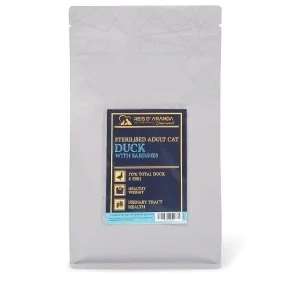The Tornjak originated from genetically homogeneous, almost extinct, indigenous shepherd dogs. These dogs have...
THE BURMESE CAT
INTRODUCTION
The Burmese cat is a breed of domestic cat (Felis Catus) originating from Burma, it is divided into two groups: the American Burmese cat and the English or European Burmese cat.
THE ORIGIN OF THE BURMESE CAT
The origins of the Burmese cat date back to the 19th century, when they were discovered in the monasteries and palaces of Burma. These cats were prized and considered sacred by the local population. They were often given as special gifts or kept in temples as devoted companions to the monks. Burmese were said to have a protective role in the community, warding off evil spirits and bringing joy to those around them.
Although the Burmese were revered in their homeland, it was not until the late 19th and early 20th centuries that these felines made their way to the West. It was through the efforts of sailors and travellers that these cats made their way to Europe and the United States. However, the breed suffered a crisis during World War II, when many cats were lost due to rioting and destruction. Fortunately, a dedicated group of breeders worked hard to preserve the breed, which allowed its survival and further expansion.
Over the years, the Burmese were bred and refined to develop their present appearance and distinctive character. Those with darker coats, expressive eyes and solid constitutions were carefully selected. The breed was also crossed with other breeds such as the Siamese to improve its characteristics.
WHAT DOES THE BURMESE CAT LOOK LIKE?
According to the morphology information we got from TICA (The International Cat Association), the Burmese comes in a range of solid and tortoiseshell colours: deep, dark brown; medium, warm blue; warm honey beige chocolate with pink or fawn undertones; a lovely lilac varying in tone from a bright pinkish-grey to a silvery platinum with pink undertones; reds of a light golden apricot with melon-orange undertones; deep, warm creams with hints of apricot; and the soft mix of red or cream, chocolate, blue or lilac found in tortoiseshells.
In young cats, the points will be darker, but as the cat ages and the coat matures, the body colour becomes more intense and richer until there is only a slight difference between this and the colour of the legs, head and tail.
The Burmese is a medium-sized, compact cat, with a strong, well-muscled body which makes him surprisingly heavy for his size. It has a short, silky, single coat that hugs the muscular body and is a pleasure to pet. The Burmese is a sturdy cat like a small bulldog, the females being smaller than the males. His head is rounded and his large, innocent-looking golden eyes give him a gentle expression.
Its satiny coat requires little maintenance. A weekly brushing with a rubber brush to remove loose hairs will polish the coat to a shine. Petting oils and stroking with your hands will help to maintain the coat's balance, and a quick wipe with a chamois will add the finishing touch.
THE HEALTH OF THE BURMESE CAT
Burmese, like many other cat breeds, are prone to dental problems such as plaque build-up and gingivitis. Moreover, some Burmese may be susceptible to respiratory diseases, such as feline respiratory syndrome (FRS), due to their distinctive facial structure as well as heart disease, such as hypertrophic cardiomyopathy, which affects the heart muscle. Symptoms may include difficulty breathing, lethargy and loss of appetite.
THE PERSONALITY OF THE BURMESE CAT
The character and temperament of the Burmese are two of its most captivating and distinctive attributes. This breed has won the hearts of countless cat lovers all over the world thanks to its unique and charming personality.
One of the most notable characteristics of the Burmese is their deep affection and affection for their owners. These cats are extremely approachable and enjoy being close to people. They love to cuddle on your lap, receive cuddles and share intimate moments with their loved ones. Their affectionate nature creates a strong and special bond between the cat and its family.
CONCLUSION
The character of the Burmese cat is extremely sweet and sociable. This feline loves the company of his family, especially their caresses. It is very affectionate and does not like to be alone. Therefore, it is the ideal companion for people who spend a lot of time at home.
Leave a comment
Log in to post comments
















